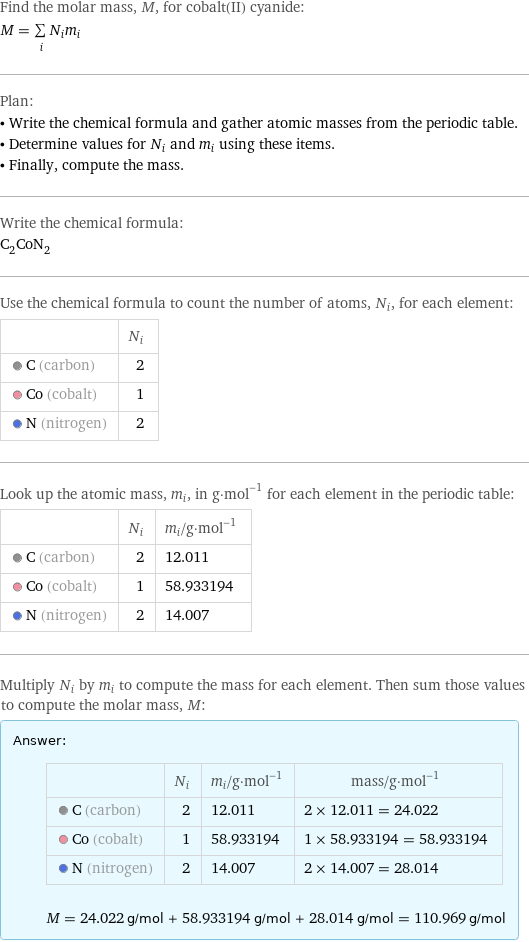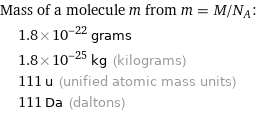Input interpretation

cobalt(II) cyanide | molar mass
Result

Find the molar mass, M, for cobalt(II) cyanide: M = sum _iN_im_i Plan: • Write the chemical formula and gather atomic masses from the periodic table. • Determine values for N_i and m_i using these items. • Finally, compute the mass. Write the chemical formula: C_2CoN_2 Use the chemical formula to count the number of atoms, N_i, for each element: | N_i C (carbon) | 2 Co (cobalt) | 1 N (nitrogen) | 2 Look up the atomic mass, m_i, in g·mol^(-1) for each element in the periodic table: | N_i | m_i/g·mol^(-1) C (carbon) | 2 | 12.011 Co (cobalt) | 1 | 58.933194 N (nitrogen) | 2 | 14.007 Multiply N_i by m_i to compute the mass for each element. Then sum those values to compute the molar mass, M: Answer: | | | N_i | m_i/g·mol^(-1) | mass/g·mol^(-1) C (carbon) | 2 | 12.011 | 2 × 12.011 = 24.022 Co (cobalt) | 1 | 58.933194 | 1 × 58.933194 = 58.933194 N (nitrogen) | 2 | 14.007 | 2 × 14.007 = 28.014 M = 24.022 g/mol + 58.933194 g/mol + 28.014 g/mol = 110.969 g/mol
Unit conversion

0.11097 kg/mol (kilograms per mole)
Comparisons

≈ ( 0.15 ≈ 1/6 ) × molar mass of fullerene ( ≈ 721 g/mol )

≈ 0.57 × molar mass of caffeine ( ≈ 194 g/mol )

≈ 1.9 × molar mass of sodium chloride ( ≈ 58 g/mol )
Corresponding quantities

Mass of a molecule m from m = M/N_A: | 1.8×10^-22 grams | 1.8×10^-25 kg (kilograms) | 111 u (unified atomic mass units) | 111 Da (daltons)

Relative molecular mass M_r from M_r = M_u/M: | 111